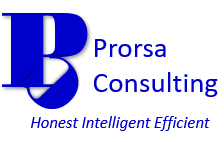Start Negotiating for EHS Management Systems Like the Pro You Are
By : Admin -

Disclaimer: Please be aware that this blog post contains affiliate links and any purchases made through such links will result in a small commission for me (at no extra cost for you). Feel free to visit our Disclosure of Material Connection page for more information.
It Doesn’t Have to Be Either Or
The life of an EHS professional requires true grit and determination. We get caught between knowing what to do to improve protections for workers and the environment and what we are allowed to implement, which is often driven by regulatory requirements and cost.
Organizations often challenge the desire to perform beyond compliance. Nevertheless, sometimes we may find ourselves negotiating for EHS management systems in an effort to improve & move beyond simple compliance.
Running a business in a lean state increases the chances of showing the strong quarterly earnings. Yet, practicing sound EHS management gives protection to company interests. In short, it doesn’t have to be either earnings or EHS. The best EHS management systems add value by enhancing efficiency, producing cost savings, and providing a means to stay in continued compliance.
In the previous post, Practical EHS Management System Basics & Tips to Get You out of the Gate, we covered some tips to get you started on an EHS management system journey. In this post, we will continue the discussion by outlining a strategy to assist in gaining senior leadership buy-in when negotiating for EHS management systems.
Negotiating for EHS Management Systems: Know the Problem(s)
Before you even approach senior leadership with the possibility of implementing a management system, you must have a clear understanding of the EHS problems needing resolution. These problems will vary from company to company. However, past EHS performance offers a wonderful place to start when trying to define clear and present issues.
The following are suggestions of EHS performance problems that may result from the lack of a systematic EHS management approach:
- High incident/injury rates (above industry standard)
- High experience modification rates (EMR)
- Frequently missed regulatory requirements (i.e. inspections, reporting, monitoring, etc.)
- Out of date plans and procedures
- Poor EHS recordkeeping
- Identified EHS deficiencies left frequently uncorrected
- Sustained inability to attain EHS goals
- Continued “emergency” expenditures for EHS to retroactively correct problems
- Loss of potential or existing customers due to EHS performance
- Large fines or numerous/repeat citations for noncompliance
Intensively review your site’s EHS data, and compile statistics in the areas you see as existing problems. Determinations of problem areas should be figures driven and specific. It is not enough to know the organization has a high injury rate and missed inspections.
For example, you need to know the company’s average injury rate for the last 3 calendar years is 25% above the industry average, and the organization failed to perform 15% of its required regulatory inspections last year. By making the problems specific and figures driven, you lay a solid foundation to build upon as you move through the negotiating for EHS Management Systems process.
Negotiating for EHS Management Systems: Know the Senior Leadership
Senior leadership ultimately makes the final decision on whether or not the organization will implement an EHS management system. Subsequently, the importance of knowing the senior leadership cannot be stressed enough.
Negotiation involves the art of influence, and you cannot successfully negotiate for enhanced EHS management if you don’t know what influences senior leaders in the decision-making process. Additionally, by structuring your initial ask in a manner that resonates with senior leaders, it will be easier to reach the end goal.
So, do your reconnaissance. Do your senior leaders feel your organization’s culture can support a complete management system implementation? Is the primary decision to proceed going to be ultimately based on a cost-benefit analysis or a strict needs basis?
Have areas of EHS been given special importance by senior leaders in the past? Do your senior leaders perceive EHS as a necessary evil, an integral part of the way business is conducted, or somewhere in-between? The answers to these questions can help to shape the tone and content of an initial EHS Management System proposal to senior leaders.
Moreover, review and evaluate your organization’s core values, vision, mission, and EHS policy statements, as applicable. These will provide insight into how senior leaders view the company in the present and what they envision for the organization in the future.
Furthermore, knowing this information will assist you in aligning your proposal with the widely accepted views of the organization, increasing your success while negotiating for EHS Management Systems.
Negotiating for EHS Management Systems: Prepare the Proposal
Keeping in mind that negotiating for EHS management systems often entails several rounds of discussion before arriving at an approval, involving others at the proposal development stage is wise if you have not already done so during previous steps. These advisors may act as a sounding board for ideas to improve your proposal.
At the very least, bring your immediate supervisor and the organization’s highest ranking EHS official into the process at this stage. They will provide you with valuable insight. Moreover, more than likely you will need to secure support from these individuals to get your proposal in front of senior leadership.
Armed with your identified problem(s), a good sense of what influences the decision-making of senior leaders, and the support from your advisors, the time has come to prepare your proposal. During this portion of the process, you will want to develop your EHS management system request in a way that:
- Gives specifics on the problem(s) you are seeing,
- Makes an impact on senior leaders in the hopes of rallying them to action, and
- Demonstrates clearly how a partial or full EHS Management System can aid in resolving the identified problem(s)
In addition, relevant case studies may serve as useful resources during the proposal development process associated with negotiating for EHS Management Systems. Being able to show successful results from other companies in similar situations can bolster your argument for a management system approach.
Likewise, you will want to research the resources necessary to implement your proposed solution. Integrating this information into the proposal will provide senior leadership with the information needed to make the best-informed decision.
Negotiating for EHS Management Systems: Select A Champion
Choose the champion for your EHS Management System proposal wisely. This individual likely will serve as an essential part of the negotiating for EHS Management Systems process to garner the buy-in needed to make your proposal a reality.
Ideally, this person will be one of the senior leaders or at the very least have opportunities to frequently engage senior leadership. Nonetheless, the champion should exhibit the following characteristics for the best chance of success.
1) Credibility
The champion must possess credibility with those whose support you want to gain. This trait can take time to build within relationships. Subsequently, it is best to select an individual who senior leaders are apt to believe from the beginning. In many cases, this will need to be a person with some authority.
2) Knowledge of management systems
Whoever is chosen to fulfill the role of the champion should have a basic knowledge of management systems. This will enable the individual to be able to speak from a place of authority when answering questions and sharing information about the proposal with others.
3) Respect of others
It is extremely hard to persuade people to any course of action without their respect. As with credibility, earning respect can take time. Respect goes a long way to ensuring trust in the recommendation being presented. This is an essential ingredient to at least getting your proposal really heard by senior leaders.
4) Excitement and passion for the proposal
The best champions truly believe in the recommendations they advocate. Without demonstrated excitement and passion, it may be difficult to influence others to buy-in to the suggested course of action. Furthermore, champions must be completely on board with an EHS management system approach as the preferred solution.
5) Willingness to share a sincere opinion with others
As the proposal’s advocate, the champion should exude a genuine willingness to speak to other individuals concerning the proposed EHS Management System. This includes the confidence to share his/her opinion with senior leaders.
Additionally, sincerity is a key component, which is why the champion must fully buy-in to the suggested solution. You want to give an authentic, persuasive message to garner support when negotiating for EHS Management Systems.
Negotiating for EHS Management Systems: Secure Proposal Approval
Now you should be ready to approach senior leadership with your proposal. As I stated earlier, proposal approval may take place over several discussions before a final decision is reached.
You, other higher ranking EHS personnel, or some combination of the two may be navigating the presentation stage of the negotiation process. As such, the importance of effective communication cannot be overstated.
It is not always easy to present an idea in a manner that gives you the best chance at a successful outcome. In these cases, a script would be beneficial. The book Lifescripts: What to say to get what you want in life’s toughest situations by Stephen M. Pollan & Mark Levine may be useful to the proposal’s presenter.
It has numerous scripts for use in all kinds of situations. I find the book helpful because it provides a strategy, tactics, flowcharted script, and adaptations for each situation. If you wish to make use of this tool for an EHS management system implementation negotiation, I would recommend adapting the “Asking Your Superior for Additional Responsibilities” lifescript for this purpose.
The securing proposal approval stage is the time to put your chosen champion to work. He/she should support the EHS Management System approval process by voicing agreement with the proposal and the reasons why.
Moreover, the champion, along with yourself and other involved EHS professionals, should have the ability to answer any questions raised by senior leadership.
As senior leaders approach a final decision, remember to stay flexible. Improvements often occur over time rather than all at once. If senior leaders approve certain aspects of the proposal but reject others, you should count it as a success.
Even a partial EHS management system implementation will move the organization in the right direction and help to enhance EHS performance.
Related EHS Management System Articles of Interest
Wrapping It Up
Negotiating for EHS management systems may present some challenges. However, with the right strategy the chances of getting final approval to implement improve greatly. Moreover, the prospect of better protections for workers and the environment will always be worth the challenge.
Prorsa Consulting works with regulated businesses to assess, maintain, and enhance their environmental and safety compliance. Check out the Services page for more information. You can also contact us via contact@prorsaconsulting.com with any questions about our services.
Your feedback on this blog’s content is always encouraged. If you found this information useful, be sure to like and/or share below. You can also give your feedback via our Contact Us page.
Don’t forget to sign up for the Prorsa Consulting Newsletter to receive exclusive content and blog updates. Moreover, you can follow Prorsa Consulting on Google+, LinkedIn, Pinterest, and Twitter.

